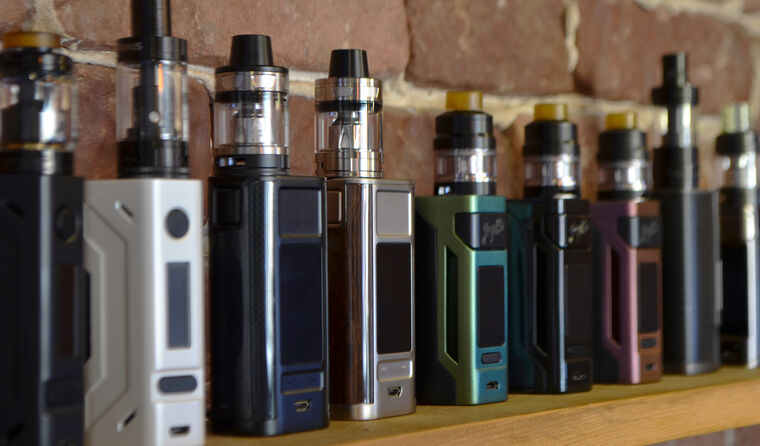News
Toddlers most impacted by vape poisonings: Study
Researchers say educational campaigns ‘are warranted’ after finding toddlers account for 56% of e-cigarette exposures.
 More than seven million vaping products have been seized by the Australian Border Force and the TGA in the past year.
More than seven million vaping products have been seized by the Australian Border Force and the TGA in the past year.
More needs to be done to protect Australian children from accidental vape poisoning, after new research revealed toddlers account for more than half of all exposures.
The study, published in the International Journal of Drug Policy this month, analysed e-cigarette exposures reported to the Victorian Poisons Information Centre between January 2017 and September 2023.
The study uncovered 547 reported exposure cases, with 83% being unintentional exposures.
Toddlers accounted for 56.1% of exposures, followed by adults with 26.9%, infants with 8.6%, children with 5.5%, and adolescents with 2.9%.
In total, 137 cases, 25%, required a referral to hospital and around 20% were given a ‘minor’ Poisoning Severity Score, seven cases were ‘moderate’ and two were fatal.
This six-year timeframe studied saw significant changes to Australia’s vaping laws, with rules introduced in 2021 making it illegal to buy nicotine vaping products from overseas websites without first getting a prescription.
This legal change was found to have a significant impact on vape poisonings in Australia.
The study found that in the two years before and after the legislated changes in October 2021, there was a total of 461 exposures – 103 occurring before the change and 358 after.
Between October 2019 and September 2021, the median number of monthly cases was just three, however this increased to 15 per month in the 24 months from October 2021 to September 2023.
‘It is unsurprising that the 2021 law was insufficient to countermand the already-rising tide of vaping, as it was difficult to enforce,’ researchers said.
‘Nicotine e-cigarettes can easily pass for their non-nicotine counterparts, so importation despite 2021 laws could be achieved by not declaring nicotine content, leading to proliferation of illicit devices.
‘Detection of illegal products was further hindered by lack of a unified, national approach, with enforcement primarily left to the states.’
The research comes as a ‘vaping epidemic’ continues to grip Australia, with people aged 14 and over who reported vaping in the past year increasing from 2.5% in 2019, to 7% in 2022–23.
In October 2024, new laws were introduced to allow people aged 18 years and older to purchase nicotine vapes with 20 mg/mL or less from a pharmacist without a prescription.
A prescription from a medical or nurse practitioner is still required for nicotine concentrations greater than 20 mg/mL and for those aged under 18 years.
Despite new vaping laws rolling out, rules continue to be flouted across the country as demand for the product shows no sign of slowing down.
Earlier this month, the Therapeutic Goods Administration (TGA) issued a combined total of $396,000 in infringement notices to 20 Melbourne retail businesses for the alleged unlawful supply of vaping goods.
In total, more than seven million vaping products have been seized by the Australian Border Force and the TGA in the past year.
Victoria’s Chief Health Officer Professor Tarun Weeramanthri said these illicit vapes can contain many other toxic chemicals, which are damaging when repeatedly inhaled.
‘These chemicals present a real public health risk to users, and this is why there are such clear restrictions around who can manufacture, import and supply vapes,’ he said.
However, the study’s researchers say more needs to be done to help vulnerable Australians from vape poisonings.
‘Toddlers were identified as being particularly at risk, suggesting educational campaigns for parents are warranted,’ researchers concluded.
Log in below to join the conversation.
e-cigarettes poisoning vaping
newsGP weekly poll
As a GP, do you use any resources or visit a healthcare professional to support your own mental health and wellbeing?